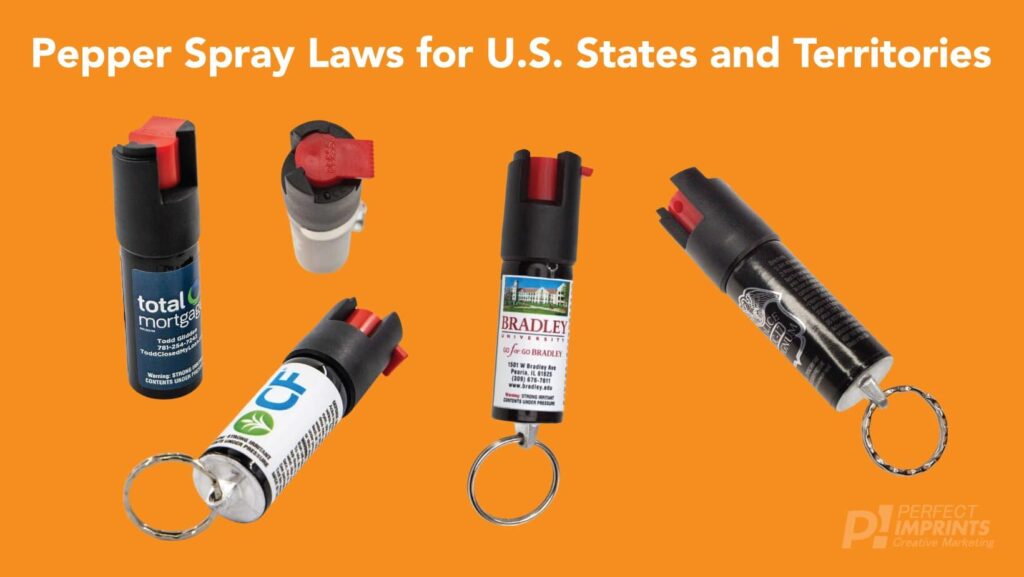Table of Contents
- Understanding Legal Restrictions on Pepper Spray Shipments Across States
- Navigating Shipping Carrier Policies for Pepper Spray Deliveries
- Best Practices for Safely Packaging and Labeling Pepper Spray for Transport
- State-Specific Recommendations for Complying with Pepper Spray Shipping Regulations
- Key Takeaways
Understanding Legal Restrictions on Pepper Spray Shipments Across States
When it comes to shipping pepper spray, legal constraints vary widely from one state to another, creating a complex tapestry of regulations that must be carefully navigated. Some states impose strict limitations on the concentration of active ingredients or outright prohibit shipping pepper spray across state lines without proper licensing. For example, states like New York and Massachusetts have particularly stringent rules requiring that pepper spray products be purchased only in person, effectively prohibiting their shipment via mail or courier services. Additionally, certain states mandate specific container sizes or require self-defense sprays to be registered with state authorities before shipping is allowed. Compliance with these laws is crucial not only to avoid fines or confiscation but also to ensure consumer safety.
Understanding these nuances means paying close attention to details such as:
- Permissible active ingredient percentages – Concentrations exceeding state limits are often illegal to ship.
- Age restrictions – Some states require recipients to be 18 or older to legally receive pepper spray shipments.
- Carrier policies – Certain carriers, like USPS, have their own restrictions, especially regarding hazardous materials.
- Usage intent – Laws may specify that shipments must be labeled for self-defense purposes only.
Navigating Shipping Carrier Policies for Pepper Spray Deliveries
Understanding the intricacies of shipping carriers’ policies is crucial when sending pepper spray products across state lines. Most major carriers, including FedEx, UPS, and USPS, impose specific restrictions on shipping self-defense sprays due to their classification as hazardous materials. For instance, while some carriers permit pepper spray shipments domestically, they often require proper labeling and packaging to comply with federal safety regulations. Failure to adhere to these rules can result in shipment delays, fines, or outright refusals, which can be a major setback for businesses and individual consumers alike.
To navigate these challenges smoothly, it’s important to familiarize yourself with each carrier’s guidelines, which typically involve:
- Restrictions on container size and volume
- Mandatory safety seals and leak-proof packaging
- Age verification requirements upon delivery
- Limitations based on destination states’ legal status
By proactively consulting carrier policies and aligning shipping practices accordingly, you can minimize compliance risks while ensuring timely, secure deliveries. This level of attention to detail not only protects your business but also respects the safety regulations that govern the transport of self-defense products across the country.
Best Practices for Safely Packaging and Labeling Pepper Spray for Transport
Ensuring that pepper spray is packaged correctly is critical to both compliance and safety during transport. Use sturdy, crush-resistant containers that prevent leakage or accidental discharge. It’s highly recommended to place the pepper spray canisters inside sealed plastic bags, further protected by a rigid outer box filled with cushioning material such as bubble wrap or packing peanuts. This layered packaging approach not only safeguards the product from damage but also avoids any potential hazards to handlers and inspectors. Additionally, always keep the canisters upright to maintain the integrity of the propellant and contents.
Clear and accurate labeling is equally essential. Each package must prominently display hazard warnings and the contents’ nature, adhering to state-specific and federal guidelines. Include the manufacturer’s information, net weight, and any relevant handling instructions. Be sure to use weather-resistant labels to ensure legibility throughout the shipping process. When labeling, consider incorporating bold text or eye-catching symbols to highlight important safety details such as “flammable” or “irritant.” Attentive labeling and robust packaging not only streamline the shipping approval process but also demonstrate professionalism and respect for regulatory standards.
State-Specific Recommendations for Complying with Pepper Spray Shipping Regulations
When shipping pepper spray, understanding the nuances of each state’s regulations is crucial to ensure compliance and avoid legal pitfalls. For example, California enforces strict size limitations, allowing only containers up to 2.5 ounces for consumer use, while Massachusetts requires a special permit for possession and thus impacts shipping policies significantly. In states like New York, pepper spray must be shipped with a clear label indicating the product’s intended use for self-defense, and shipment to minors is strictly prohibited. Furthermore, some states restrict the shipment of pepper spray through common carriers except when shipped by licensed dealers, so partnering with compliant shipping services is advisable.
It’s also important to note that several states-such as Michigan and Illinois-mandate that shipped pepper spray include safety instructions and warnings in the package. Many require that the product cannot exceed a certain cap on concentration levels or restrict active ingredients to ensure safe usage. Sellers should compile a checklist that includes:
- Verification of recipient age and legal status
- Compliance with local possession limits
- Proper labeling and documentation
- Using approved packing methods for hazardous materials
Key Takeaways
Navigating the complexities of pepper spray shipping regulations can be daunting, but understanding the rules state by state ensures you stay compliant and avoid unnecessary hassles. Whether you’re a retailer, a distributor, or simply looking to purchase pepper spray for personal protection, staying informed is key. Keep this guide handy as a reference to help you confidently manage shipments across the U.S. Remember, regulations can change, so staying updated with your state’s latest requirements will always serve you well. Stay safe, stay informed!Check Our Other Blogs
- StunGun – Your Trusted Source for Stun Guns, Laws, and Self-Defense Tips
- PepperSprayLaws – Your Trusted Resource for Pepper Spray Information
- StunGunLaws – Your Trusted Guide to Stun Gun Legality and Safety




